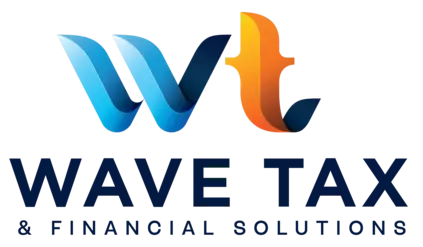It is widely recognized that saving for the future is essential, and it is crucial to start this process as early as possible. Regardless of your age or the distance to retirement, the goal is to ensure a comfortable and enjoyable retirement.
We share three essential ways for succesful saving:
🔹Amount: Determining How Much and for How Long
At Wave Tax, we recommend aiming to save at least 15% of your pre-tax income annually for retirement. This strategy helps to accumulate adequate savings to sustain your current lifestyle.
It is important to note that the 15% savings target includes any employer matching or profit-sharing contributions to your 401(k) or other workplace retirement accounts, such as a 403(b) or governmental 457(b) plan.
Employer contributions can significantly aid in reaching the 15% goal.
🔎 For instance, if your annual salary is $50,000 and your employer matches 100% of your contributions up to 6%, you would only need to contribute 9%, or $4,500, to achieve a total savings of 15%, or $7,500, with your employer contributing an additional $3,000.
Additionally, in 2024, the maximum pre-tax contribution to a 401(k) plan is $23,000. If you are 50 years old or older by the end of the calendar year, you can also make a catch-up contribution of $7,500.
➡️ For IRAs, both Roth and traditional, the contribution limit for 2024 is set at $7,000, with an additional $1,000 allowed for individuals aged 50 and above.
Furthermore, Health Savings Accounts (HSAs) offer another avenue for tax-advantaged savings. To qualify for an HSA, you must be enrolled in a high-deductible health plan (HDHP). In 2024, the IRS contribution limits for HSAs are $4,150 for individual coverage and $8,300 for family coverage. Individuals aged 55 and older may also make an additional catch-up contribution of up to $1,000 per year.
You may also like | SEP IRA Accounts: Understanding its Functionality
🔹Account: Your Savings Strategy
Maximize your retirement savings by utilizing accounts such as 401(k)s, 403(b)s, and IRAs. If you have a High Deductible Health Plan (HDHP), consider Health Savings Accounts (HSAs), which can be one of the most efficient methods for saving for eligible medical expenses both now and during retirement.
Depending on the account type, your contributions may grow either tax-deferred or tax-free.
With traditional 401(k) plans or IRAs, contributions are made with pre-tax dollars, effectively lowering your taxable income and reducing your tax liability for the year of contribution.
Conversely, Roth 401(k)s and Roth IRAs require after-tax contributions, meaning the funds have already been taxed, and you typically won’t incur taxes upon withdrawal from these accounts.
📌 Additional savings alternatives to explore:
- For self-employed individuals or small business owners, retirement plans such as the self-employed 401(k) or SIMPLE and SEP IRAs enable you to allocate a portion of your income for retirement. Assess which small business retirement plan suits your needs best.
- Even if you are not employed, you can still contribute to an IRA. If one spouse is working, the non-working spouse can establish a spousal IRA and contribute to either a traditional IRA or a Roth IRA.
- If you have an HSA-eligible health plan, contributions to an HSA are tax-deductible, and withdrawals for qualified medical expenses—both now and in the future—are tax-free, encompassing both contributions and any accrued earnings.
Given the anticipated rise in healthcare costs during retirement, it is prudent to specifically plan for these expenses.
🔹Asset Allocation: Your Investment Strategy
Historically, stocks have yielded higher returns than bonds and cash over extended periods. Therefore, when planning for a long-term goal such as retirement, which may be several years off, it is often advisable to allocate a larger portion of your investments to stocks and stock mutual funds.
However, it is important to recognize that investing in stocks entails greater volatility, necessitating a cautious approach to the associated risks.
As a general guideline, investors with a longer time frame should maintain a substantial and well-diversified portfolio that includes stocks.
📍Planning the Future
At Wave Tax, we know it can be challenging to concentrate on long-term saving objectives when retirement is still years away and other financial obligations are pressing, but we can provide you valuable guidance.
📩 Contact us at info@wavetax.us

